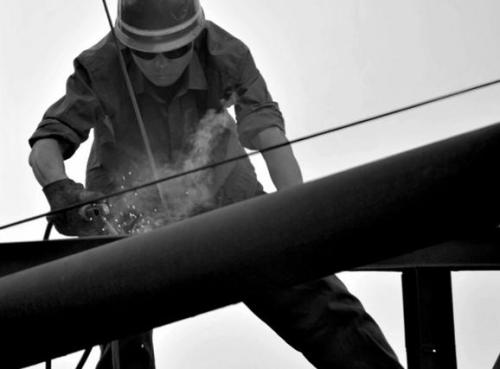
The recent slowdown in macroeconomic growth has led to a weaker demand for steel products, while the production of crude steel has continued to increase, and the supply and demand conditions of steel products have not improved and may even worsen. In addition, the significant increase in international iron ore production capacity, the increase in mine shipments, and the history of new iron ore stockpiles in domestic ports are likely to drive down ore prices and ultimately lower the cost of steel. At present, steel prices will still be in the bottom-line market.
With the poor performance of fixed assets investment, import, export, and consumption, China's economy is facing greater downward pressure. If the stimulus policy does not increase further, steel demand will remain weak. First, the performance of fixed asset investment was weak. From January to April, the national fixed asset investment (excluding rural households) increased by 17.3% year-on-year, with the growth rate falling by 0.3 percentage points from January to March and down by 3.3 percentage points from the same period of last year. . The data of the real estate industry is also not optimistic and has exacerbated the market's pessimism. Statistics show that from January to April, national investment in real estate development increased by 16.4% over the same period of 2013. The growth rate decreased by 0.4 percentage points from January to March, and was 4.7 percentage points lower than the growth rate in the same period of last year. Second, although the growth rate of imports and exports in April turned negative, the total foreign trade exports still fell by 0.5% in January-April this year. It is very difficult to achieve the goal of 7.5% growth in foreign trade imports and exports throughout the year. Finally, the growth rate of consumption also declined slightly. In April 2014, the total retail sales of consumer goods reached 1,970.1 billion yuan, a year-on-year growth of 11.9%, which was a 0.3 percentage point drop from March.
The steel industry is trapped in a prisoner's dilemma and crude steel production is operating at a high level. The market has reached a high level of consensus on serious overcapacity. The unfavorable conditions such as the sluggish steel prices, the loss of the entire industry, and the tightening of the capital chain caused by severe overcapacity have become an unbearable burden on the steel industry. However, the steel industry has been trapped in a "prisoner's dilemma." In the absence of a significant loss in the steel mills, the steel plant's production load remains at a high level, and "reduction of production" is only a wishful thinking. According to the data from the China Iron and Steel Association, in the first half of May, the daily output of crude steel of key enterprises was 1.824 million tons, which increased continuously for the fourth quarter and crude steel production was at a high level.
The supply pressure of iron ore is relatively large, and there is a large space for the decline in ore prices. After the financial crisis, iron ore producers actively expanded their production capacity due to their preference for iron ore in emerging markets. The actual production capacity of foreign mines is gradually increasing. Mines belong to the heavy asset industry, and its infrastructure has strong specificity. The scale effect is the optimal choice for mines. At the same time, the production costs of iron ore in foreign mines are generally low, and the tolerance for falling ore prices is significantly higher than that of domestic mines. Therefore, the new production capacity of the four major mines will significantly increase the global supply of iron ore. The increase in mine shipments in the second and third quarters will be a high probability event.